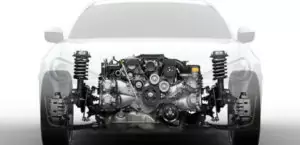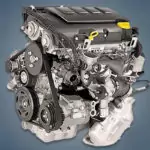The 1.2-liter Peugeot EB2DTS or HNY turbo engine has been produced by the company since 2014 and is installed on all compact and medium-sized models of the concern under the PureTech 130 indices. There are a number of modifications to this power unit: EB2DTSD, EB2DTSM and EB2ADTS.
Engines of the EB family: EB0, EB2, EB2M, EB2DT, EB2DTS, EB2ADTX.
Specifications
| Production years | since 2014 |
| Displacement, cc | 1199 |
| Fuel system | direct injection |
| Power output, hp | 130 |
| Torque output, Nm | 230 |
| Cylinder block | aluminum R3 |
| Block head | aluminum 12v |
| Cylinder bore, mm | 75 |
| Piston stroke, mm | 90.5 |
| Compression ratio | 10.5 |
| Features | balancers |
| Hydraulic lifters | no |
| Timing drive | belt |
| Phase regulator | dual VTi |
| Turbocharging | Garrett NGT1341LSZ |
| Recommended engine oil | 0W-30 |
| Engine oil capacity, liter | 3.5 |
| Fuel type | petrol |
| Euro standards | EURO 6 |
| Fuel consumption, L/100 km (for Peugeot 308 2015) — city — highway — combined |
5.8 4.0 4.6 |
| Engine lifespan, km | ~250 000 |
| Weight, kg | 99 |
The engine was installed on:
- Citroen Berlingo III (K9) since 2019;
- Citroen C3 Aircross II (A88) since 2017;
- Citroen C4 II (B71) in 2014 – 2018; C4 III (C41) since 2020;
- Citroen C4 Cactus II (F3) in 2018 – 2020;
- Citroen C4 Picasso II (B78) since 2015;
- Citroen C5 Aircross I (C84) since 2019;
- Citroen DS4 I (B75) in 2014 – 2015;
- DS DS3 II (D34) since 2018;
- DS DS4 I (B75) in 2015 – 2018; DS4 II (D41) since 2021;
- DS DS7 I (X74) since 2018;
- Opel Combo E (X19) since 2019;
- Opel Corsa F (P2JO) since 2019;
- Opel Crossland X (P17) since 2017;
- Opel Grandland X (A18) since 2017;
- Opel Mokka B (P2QO) since 2021;
- Peugeot 208 I (A9) since 2019;
- Peugeot 308 II (T9) in 2014 – 2021; 308 III (P5) since 2021;
- Peugeot 508 II (R8) since 2020;
- Peugeot 2008 I (A94) in 2015 – 2019; 2008 II (P24) since 2019;
- Peugeot 3008 I (T84) in 2015 – 2016; 3008 II (P84) since 2016;
- Peugeot 5008 I (T87) in 2015 – 2017; 5008 II (P87) since 2017;
- Peugeot Rifter I (K9) since 2019.
Disadvantages of the EB2DTS engine
- Turbo engines of the first years of production came under a recall campaign due to crankshaft axial play;
- Due to direct injection, the engine suffers from the formation of soot on the valves;
- Also, many owners complain about lubricant consumption for a run of 100 – 120 thousand km;
- But the main design error of the unit is the timing belt in an oil bath;
- It does not serve the prescribed 180,000 km, and its wear products clog the oil channels.






